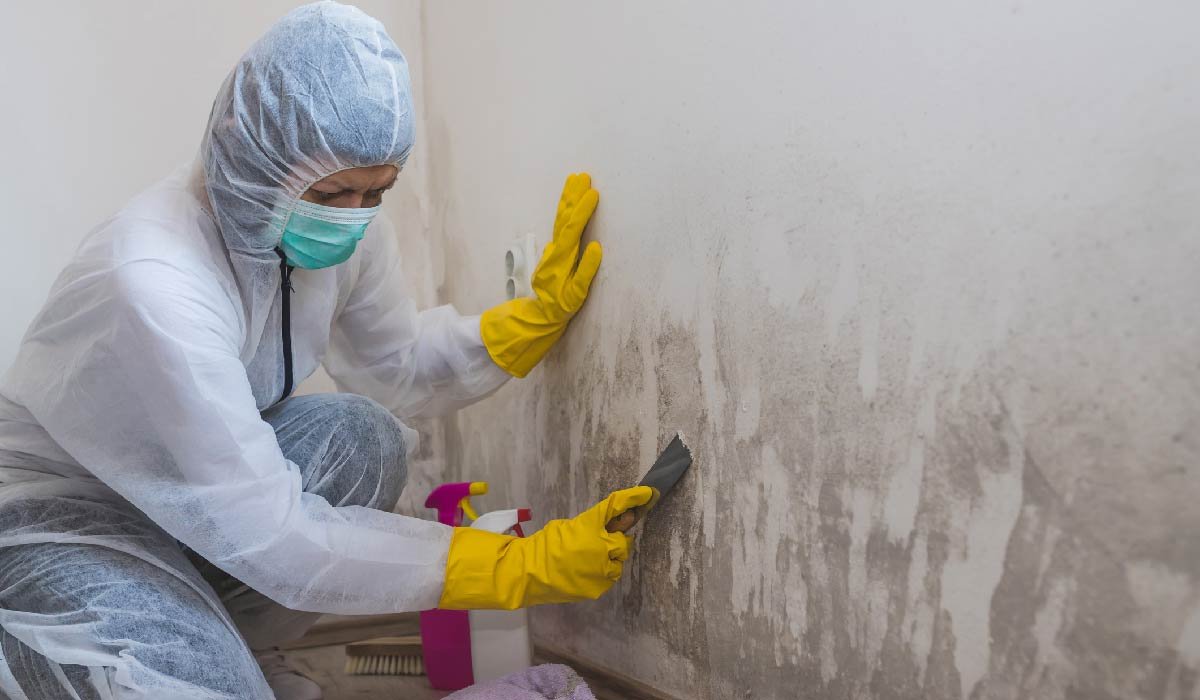Business
How to Identify and Fix Dampness in Your Home

Damp spots are not just an eyesore—they can threaten both your home and your health if ignored.
Unchecked, mildew and mould can worsen respiratory problems and allergies. Excess moisture first weakens ceilings, floors, and walls, then causes expensive structural deterioration.
In extreme situations, prolonged contact can result in metal fittings corroding and wood rot.
The good news? Tackling these issues early can protect your home, your health, and your wallet. Let us explore the best ways to keep dampness at bay.
Understanding the Types of Dampness
Rising dampness occurs when groundwater seeps up through a building’s walls.
This problem frequently appears in older properties lacking proper moisture-proof solutions or those with deteriorated structures.
This issue typically manifests on ground floor levels and creates distinctive watermarks on walls. In some cases, it can cause visible bubbling along with a musty odour that permeates the area.
When wallpaper buckles, plaster begins to crumble, or a musty smell lingers, underlying moisture problems are often the culprit.
Another common type is penetrating damp which results from water finding its way through walls. This usually occurs due to structural defects or damaged building materials.
Leaks from broken roof tiles, deteriorated sealants, or cracked brickwork are common causes, allowing water to penetrate external walls.
Condensation represents the third primary type of dampness. In the winter months, in particular, it forms when warm air meets cold surfaces.
In basements, baths, and kitchens, this can be especially problematic because activities like cooking, showering, and doing laundry produce moisture.
Recognising the Warning Signs
Early detection provides considerable advantages. It leads to substantial cost reductions and enables quick, effective responses.
Therefore, monitor areas susceptible to moisture build-up, including walls, ceilings, and spaces between tiles, particularly in humid locations.
Furthermore, stains on walls or ceilings can be a warning sign of hidden leaks, poor ventilation, or underlying structural issues.
Peeling paint or lifting wallpaper often points to excess moisture, while persistent musty odours could indicate mould or mildew growth, posing both discomfort and potential health risks.
Black or green spots on walls signal mould growth which requires immediate attention. On the other hand, salt deposits on walls often indicate rising dampness issues.
Hence, ensure the examination of less visible areas, such as spaces behind furniture or underneath sinks that often remain overlooked. For a more thorough assessment, a moisture meter can help you identify wet areas.
Conducting a Home Inspection
Begin addressing dampness by examining your entire property. To start, examine external surfaces, looking for wall cracks, as these openings allow moisture infiltration.
Moreover, check your gutters. Damaged or blocked systems can cause water to overflow onto walls. Ensure water does not collect around your foundation, as this often creates extensive issues.
Inspect window frames and door frames for gaps or wear and tear. These areas commonly allow water to seep in during rainfall.
Next, examine moisture-prone areas indoors. Basements, attics, and bathrooms attract dampness, so check them for leaks or mould growth.
Be sure to document your findings, as this helps identify patterns and prevents minor issues from worsening.
Inspect internal pipework for leaks or condensation, paying close attention to joints and connections where cracks often develop. If you live in an apartment, inform your landlord so they can address any necessary repairs.
Effective DIY Solutions for Minor Issues
Fixing moisture-related problems does not have to break the bank or require advanced intervention. Here are some easy approaches.
Enhancing Circulation
If you are dealing with mild humidity at home, a few simple steps can make a big difference.
Start by opening windows regularly, especially in moisture-prone areas like kitchens and bathrooms, to improve airflow. While you are at it, take the time to clean your blinds to remove any trapped moisture or dust.
For extra ventilation, place exhaust fans in key areas to help expel excess humidity. In rooms with poor airflow, using a dehumidifier can effectively maintain dry conditions and prevent mould growth.
Also, install trickle vents in windows to provide continuous background ventilation without compromising security.
Sealing and Waterproofing
A practical approach involves sealing gaps or cracks in walls or around windows to stop moisture penetration.
Quality sealants create lasting protection. For example, applying water-resistant paint protects against moisture while keeping your living space attractive.
Consider applying external waterproof rendering solutions to walls particularly susceptible to rain penetration. Moreover, install proper protective membranes in areas prone to water ingress.
Sustaining Standard Maintenance
Regular upkeep ensures dry and safe conditions. Therefore, clear blocked drains and gutters to prevent water accumulation.
You can enlist the help of high-end cleaning services if you are not sure how to effectively do this. These experts have access to tools and products that will fix blocked gutters without you lifting a finger.
Likewise, check your roof for damage and address problems promptly to prevent leaks. Check your plumbing for minor faults and fix them. Moreover, regularly clean ventilation grilles and extractor fans to ensure they function efficiently.
Following these guidelines allows homeowners to enjoy comfortable surroundings and avoid expensive repairs.
When to Seek Help
Handling these issues on your own can be insufficient at times. Rising damp, in particular, presents complex challenges requiring the knowledge of a professional.
It can compromise structural integrity, necessitating barrier installation or chemical treatments. Long-term or severe damages require a specialist’s assessment to determine appropriate solutions.
Hence, engage trained individuals with appropriate qualifications, positive reviews, and relevant experience.
Preventing Dampness in the Future
Since moisture damage can be challenging to repair, it is best to prevent it from happening in the first place.
To block ground moisture, install moisture barriers in basements or crawl spaces. Also, ensure proper ventilation when drying clothes indoors by using appropriate racks.
Opt for appropriate insulation solutions to reduce condensation on cold surfaces and consider installing humidity monitors in problem areas to track moisture levels.
Conclusion
Maintaining a dry home promotes your health and safety. Understanding dampness types and recognising early indicators enables effective problem management.
Conversely, neglecting these problems can lead to health complications and property damage. So, the next time you see watermarks on your walls or floors, do not panic. You now know how to fix these issues without undue fuss.
-

 Celebrity12 months ago
Celebrity12 months agoWho Is Mindy Jennings?: All You Need To Know About Ken Jennings Wife
-

 Celebrity1 year ago
Celebrity1 year agoWho Is Jennifer Rauchet?: All You Need To Know About Pete Hegseth’s Wife
-

 Celebrity1 year ago
Celebrity1 year agoWho Is Enrica Cenzatti?: The Untold Story of Andrea Bocelli’s Ex-Wife
-

 Celebrity1 year ago
Celebrity1 year agoWho Is Klarissa Munz: The Untold Story of Freddie Highmore’s Wife
















